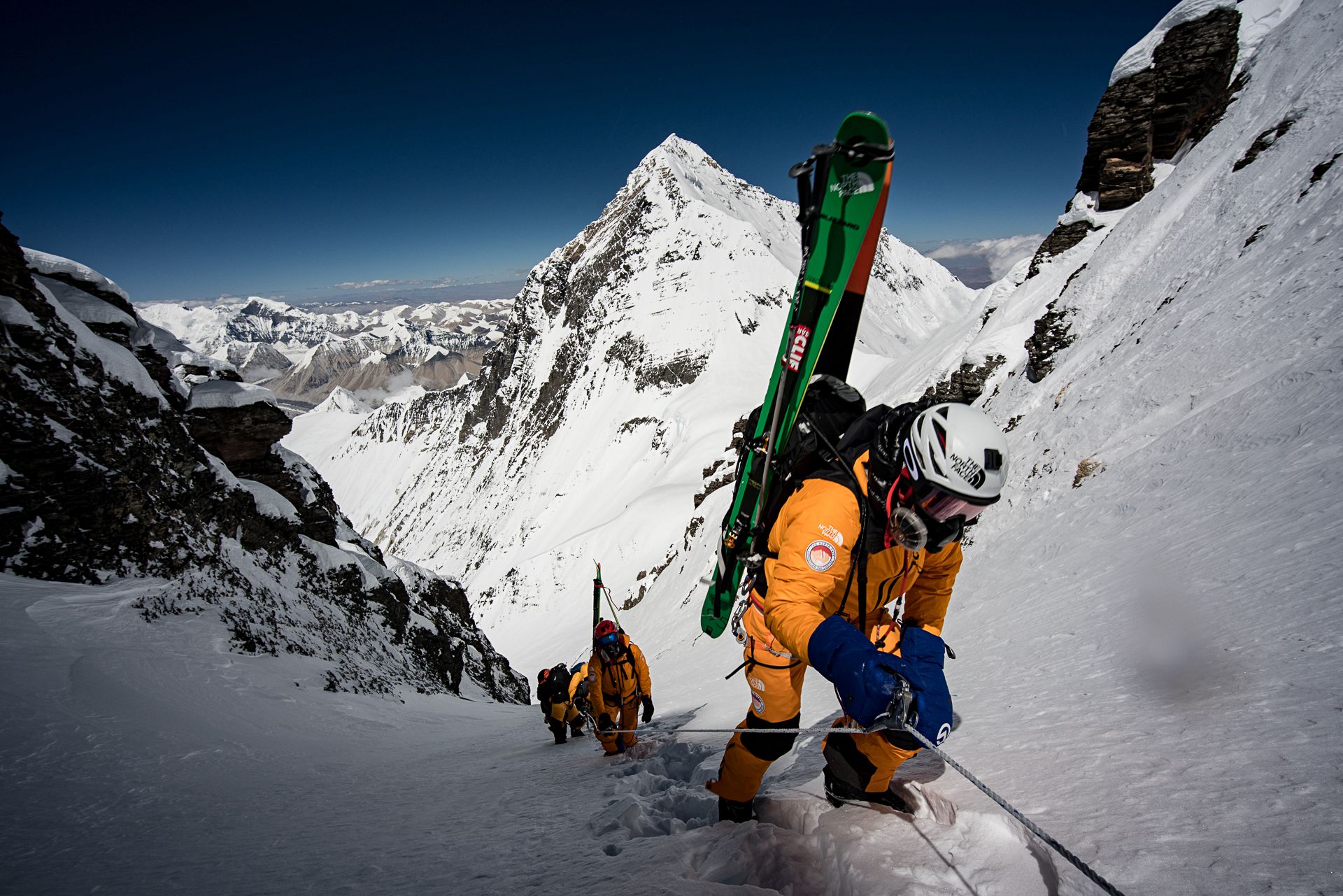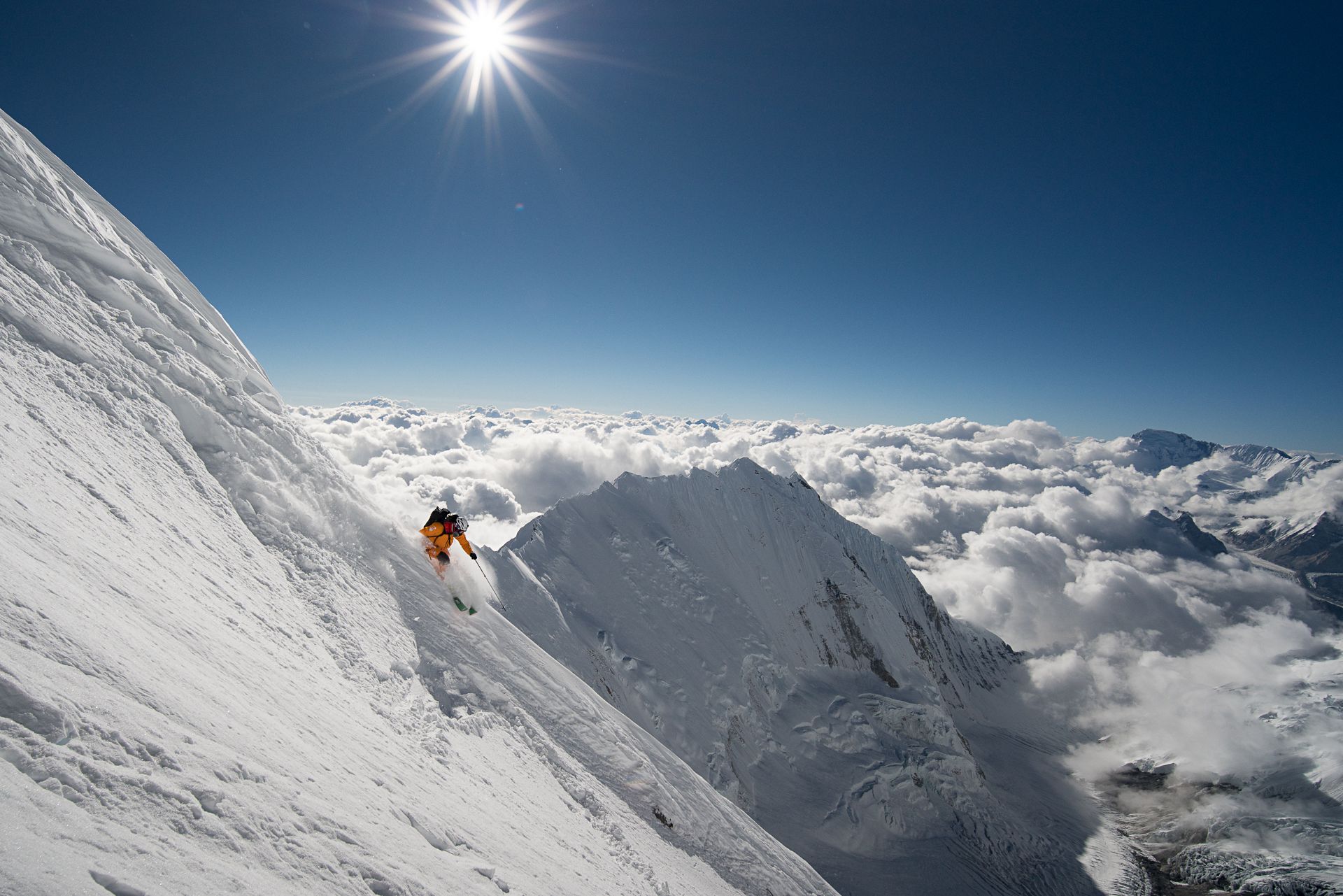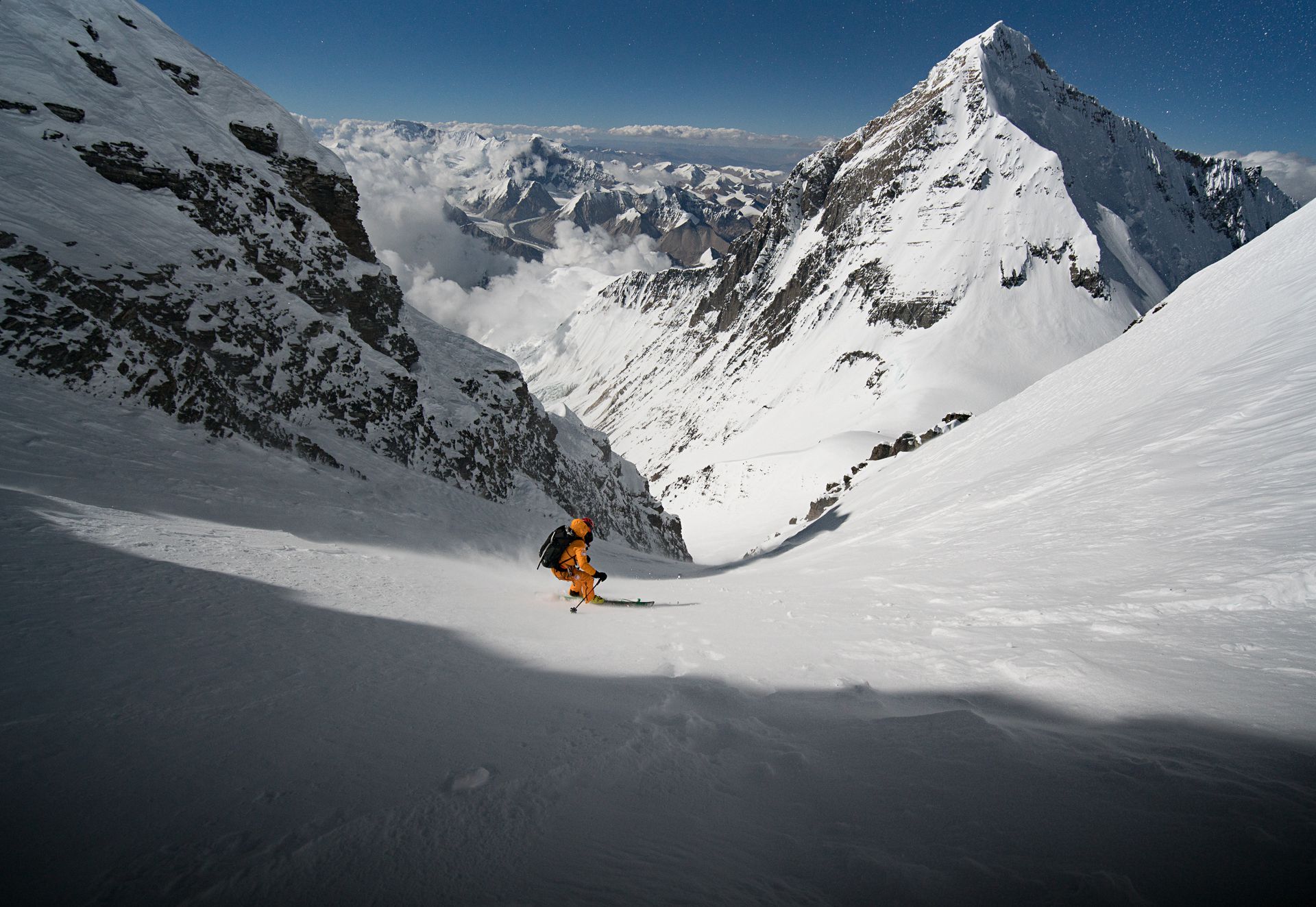With a summit sitting at the lofty height of 8,516 metres (27,940 ft), just under the cruising altitude of a commercial airliner – the task of climbing to the summit of Lhotse is no small task.
A 12 hour, 1,260 vertical metre climb from Camp Three and a total of 3,216 vertical meters climbed from Basecamp gives access to to the summit of Lhotse, the fourth highest mountain in the world. By adding a pair of skis, boots and ski touring equipment to their respective packs, Hilaree Nelson and Jim Morrison gave themselves the chance to ski the most sought after line in the world.

The huge 2,100 metre ’Dream Line’ on Lhotse – The Lhotse Couloir – savagely splits through the rocky walls found on the north-west face of Lhotse, offering the only ‘safe’ ski passage down directly from the summit.
“Summers in the Himalaya equal the monsoon season, dumping unstable amounts of snow onto the high mountains”
The couloir proper stretches 770 metres down towards the Khumbu Glacier which sprawls its way into the Khumbu Icefall – a mind-boggling mess of icy walls and crevasses that are all tentatively linked together by snow bridges which are shifting and moving year-on-year.
Not only is the couloir a huge climb and ski descent in itself, but it also requires something short of a miracle to get it in stable (safe) snow conditions. It’s basically a gamble as to what conditions you’ll find the couloir in, a real roll of the dice, due to the inaccessibility of the face.
I managed to pin Hilaree and Jim down during a manic ISPO trip. Here’s Jim and Hilaree’s Lhotse story, in their own words.
Jim: “When you look at Lhotse from the Western Cwm of Everest, it just looks like a big face… The only place you see the Lhotse Couloir is from the South Col of Everest at around 26,000ft (7924m) and there’s few people who actually turn around whilst climbing at altitude to take a photo for you.”






